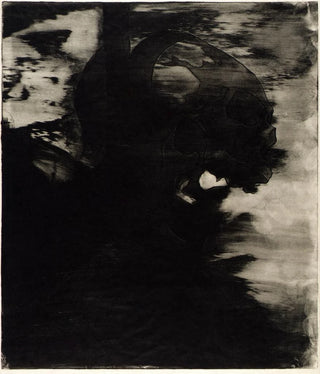Art print | Skull - John White Alexander


View from behind

Frame (optional)
Reproduction Crâne - John White Alexander – Engaging Introduction
The artwork "Crâne" by John White Alexander presents a captivating exploration of mortality and aesthetics. This painting, both understated and evocative, invites viewers to a profound reflection on life and death. Through this piece, the artist manages to capture the very essence of human existence, blending refined technique with powerful symbolism. The skull, a recurring motif in art, becomes here a symbol of contemplation, a starting point for introspection on our own condition. Observing this work, one feels a drive toward a quest for meaning, a dialogue between the visible and the invisible.
Style and uniqueness of the work
Alexander's style is distinguished by its realistic approach and attention to detail. In "Crâne," he uses delicate nuances to bring the bone to life, revealing textures and shadows that seem almost tangible. Light plays a crucial role in this composition, illuminating certain parts of the skull while leaving others in shadow, creating a striking contrast. This chiaroscuro technique, inherited from old masters, allows the artist to convey an atmosphere that is both serene and unsettling. The composition is stripped down, without superfluous artifices, which enhances the emotional impact of the piece. Each viewing of the painting reveals new facets, as if the skull itself had stories to tell, secrets to unveil.
The artist and his influence
John White Alexander, an emblematic figure of the late 19th century, established himself in the art world through his ability to fuse symbolism and realism. His training with European masters allowed him to refine his unique style, combining technical precision with poetic sensitivity. Alexander was also an accomplished portraitist, but it is in works like "Crâne" that he explores darker and more introspective themes. His influence is felt among many contemporary artists who continue to explore mortality and identity through similar motifs. By revisiting classical symbols, he paved the way for a new understanding of art, where beauty and melancholy coexist in harmony.

Matte finish

View from behind

Frame (optional)
Reproduction Crâne - John White Alexander – Engaging Introduction
The artwork "Crâne" by John White Alexander presents a captivating exploration of mortality and aesthetics. This painting, both understated and evocative, invites viewers to a profound reflection on life and death. Through this piece, the artist manages to capture the very essence of human existence, blending refined technique with powerful symbolism. The skull, a recurring motif in art, becomes here a symbol of contemplation, a starting point for introspection on our own condition. Observing this work, one feels a drive toward a quest for meaning, a dialogue between the visible and the invisible.
Style and uniqueness of the work
Alexander's style is distinguished by its realistic approach and attention to detail. In "Crâne," he uses delicate nuances to bring the bone to life, revealing textures and shadows that seem almost tangible. Light plays a crucial role in this composition, illuminating certain parts of the skull while leaving others in shadow, creating a striking contrast. This chiaroscuro technique, inherited from old masters, allows the artist to convey an atmosphere that is both serene and unsettling. The composition is stripped down, without superfluous artifices, which enhances the emotional impact of the piece. Each viewing of the painting reveals new facets, as if the skull itself had stories to tell, secrets to unveil.
The artist and his influence
John White Alexander, an emblematic figure of the late 19th century, established himself in the art world through his ability to fuse symbolism and realism. His training with European masters allowed him to refine his unique style, combining technical precision with poetic sensitivity. Alexander was also an accomplished portraitist, but it is in works like "Crâne" that he explores darker and more introspective themes. His influence is felt among many contemporary artists who continue to explore mortality and identity through similar motifs. By revisiting classical symbols, he paved the way for a new understanding of art, where beauty and melancholy coexist in harmony.






